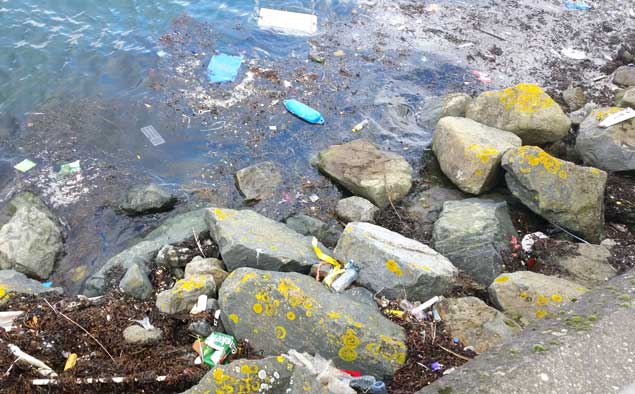#DublinBay - Litter in the water is a longstanding issue in Dun Laoghaire and Sandycove — but one local schoolgirl has taken it upon herself to do something about it.
Ten-year-old Flossie Donnelly started this past summer calling for volunteers to help clean up the sea shore at Sandycove every Friday evening, even designing her own poster to spread the word on social media and around the neighbourhood.
On her blog, Flossie writes that she was “really sad” that no one came to her first clean-up.
But a meeting at the Forty Foot the next day with county councillor Cormac Devlin led to the word spreading further in the local press.
“It’s very unusual that a child of her age approached an adult and a politician at that. That she is so environmentally aware is wonderful,” Cllr Devlin told the Dublin People in August.
By the end of the summer, Flossie was in charge of her own crew of volunteers helping to remove plastic debris that is dangerous to Dublin Bay’s marine life and local boaters alike.
Despite the shorter days and colder weather of late autumn and winter, Flossie is still leading regular coastal clean-ups and making friends along the way — including an Australian girl whose message she found in a bottle.
 Marine debris in Dun Laoghaire
Marine debris in Dun Laoghaire
More recently, Flossie was out on a RIB in Dun Laoghaire Harbour to clean up the breakwaters — filling three boats with rubbish and doing “a week’s work in a day”, according to Dun Laoghaire Coast Guard, who praised the “inspirational” girl for her efforts.
But the ambitious youngster isn’t stopping there, with plans to raise money for the installation of a Seabin automated cleaning system for the harbour, in what would be a first for Ireland.
Previously highlighted during Afloat.ie’s Rio Olympics coverage last year, the Seabin device has the potential to collect as many as 83,000 plastic bags or 20,000 plastic bottles each year.
That amounts to half a tonne of plastic annually, from visible debris to micro-plastics that threaten our protected species.
Britain’s first Seabin was recently installed at the pontoon of America’s Cup team Land Rover BAR in Portsmouth as part of a project to restore populations of oysters in the Solent.
Flossie and her beach cleaning squad will be hosting a table quiz at Fitzgerald’s Pub in Sandycove next Thursday 30 November to raise funds towards Dublin Bay’s first Seabin. For details see Flossie’s website HERE.

























